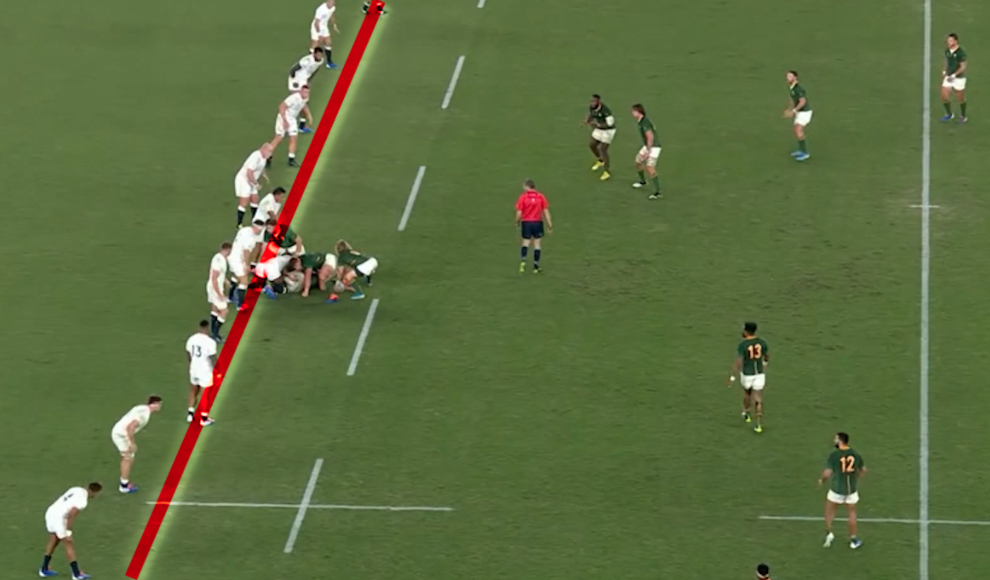Rugby is a dynamic and fast-paced sport known for its physicality and strategic complexity. However, the game’s flow is often interrupted by penalties, which can significantly impact the outcome of a match. Understanding these common infringements helps fans appreciate the nuances of the game and the importance of discipline on the field. Here’s a guide to the 10 most common penalties in rugby.

1. Offside
What It Is:
A player is offside if they are in front of a teammate who last played the ball or if they encroach within the offside line in a ruck, maul, scrum, or lineout.
Why It’s Common:
Players are constantly trying to gain an advantage, and being caught offside is a frequent mistake, especially during fast-paced phases of play.
Impact:
Offside penalties can lead to significant territorial gains for the opposition and can disrupt the momentum of the offending team.
2. High Tackle
What It Is:
A high tackle occurs when a player makes contact above the line of the shoulders of the ball carrier.
Why It’s Common:
In the heat of the game, players sometimes misjudge their tackles, leading to dangerous high tackles.
Impact:
High tackles are heavily penalized to protect players’ safety, often resulting in penalties, yellow cards, or even red cards for the offending player.
3. Not Releasing the Ball
What It Is:
The tackled player must release the ball immediately after going to ground.
Why It’s Common:
Players often try to hold on to the ball for as long as possible to create continuity in play, leading to penalties for not releasing.
Impact:
Failure to release the ball results in a penalty, giving the opposition a chance to relieve pressure and gain territory.
4. Not Rolling Away
What It Is:
After making a tackle, the tackler must roll away from the tackled player and the ball.
Why It’s Common:
In the scramble after a tackle, it can be difficult for players to roll away quickly enough, especially under pressure.
Impact:
Not rolling away slows down the game and can result in a penalty, giving the attacking team a chance to maintain momentum.
5. Entering the Ruck from the Side
What It Is:
Players must join a ruck from behind the hindmost foot of their teammate already in the ruck.
Why It’s Common:
In the heat of the moment, players often enter the ruck from the side to quickly contest the ball, leading to penalties.
Impact:
Entering from the side disrupts the integrity of the ruck and is penalized to ensure fair competition for the ball.
6. Hands in the Ruck
What It Is:
Once a ruck is formed, players cannot use their hands to pick up the ball; they must use their feet to hook it back.
Why It’s Common:
In the struggle for possession, players sometimes use their hands to try and secure the ball, resulting in penalties.
Impact:
Hands in the ruck disrupt the flow of play and are penalized to maintain the structure and rules of the game.
7. Scrum Infringements
What It Is:
Scrum infringements include early engagement, collapsing the scrum, and incorrect binding.
Why It’s Common:
Scrums are complex and require precise technique, leading to frequent penalties when these techniques are not properly executed.
Impact:
Scrum penalties can lead to free kicks or penalties, offering significant territorial advantages to the non-offending team.
8. Forward Pass
What It Is:
A forward pass occurs when the ball is thrown or passed forward by the ball carrier to a teammate.
Why It’s Common:
In fast-paced play, players sometimes misjudge their passes, leading to forward passes.
Impact:
A forward pass stops the game and results in a scrum to the opposing team, halting attacking momentum.
9. Deliberate Knock-On
What It Is:
A deliberate knock-on occurs when a player intentionally uses their hand or arm to knock the ball forward to gain an advantage.
Why It’s Common:
Players sometimes attempt to intercept passes and accidentally knock the ball forward.
Impact:
Deliberate knock-ons are heavily penalized and can result in a penalty and even a yellow card for the offending player.
10. Collapsing the Maul
What It Is:
Intentionally collapsing a maul to prevent the opposing team from advancing is illegal.
Why It’s Common:
Defending teams sometimes collapse mauls to stop the forward momentum of the attacking team.
Impact:
Collapsing the maul is dangerous and is penalized to ensure player safety and fair play.
Conclusion
Penalties are an integral part of rugby, ensuring that the game is played fairly and safely. While they can interrupt the flow of the game, understanding these common infringements helps fans appreciate the strategic depth and discipline required to play rugby at the highest level. By recognizing these penalties, fans can gain a deeper insight into the sport and enjoy the game with a better understanding of its rules and nuances.
